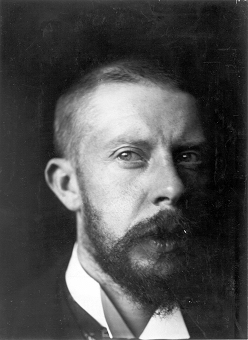Willem Witsen (13 August 1860, Amsterdam - 13 April 1923, Amsterdam) was a Dutch painter and photographer
 associated with the Amsterdam Impressionism movement. He was born in a wealthy ruling-class family,
associated with the Amsterdam Impressionism movement. He was born in a wealthy ruling-class family,
Witsen belonged to the Tachtigers, a group of young artists who proclaimed the principle of l'art pour l'art Art for art's sake. The group influenced Dutch artistic and political life during the 1890s. Witsen wrote under a pseudonym in the literary magazine De Nieuwe Gids, which he also supported financially.His circle of friends included the painters
 George Hendrik Breitner,
George Hendrik Breitner,  Isaac Israëls, and
Isaac Israëls, and  Jan Veth and the writers
Jan Veth and the writersDuring visits to London, Witsen became acquainted with the paintings of James McNeill Whistler. Witsen worked in artist's colonies in Laren, Rotterdam, Wijk bij Duurstede and Ede. He made his studies of the small town Dordrecht while sitting in a boat, which gave him the special lower viewpoint which is characteristic of his works in that town.
After returning to Amsterdam, Witsen became a member of the artists circle Maatschappij Arti et Amicitiae. He was also a member of the artists association Sint Lucas, which is named after Saint Luke, patron of the painters.
Witsen's works are distinguishable from those of a contemporary European style, Impressionism. Their atmosphere is melancholy, depicting austere, wintery, dark scenes. The dark paintings did not sell well at his first solo exhibition,
Prices granted to him at the World's Fair in Paris and St. Louis brought him to the attention of an international public. Here Witsen showed prints and paintings of Venice. He experimented with colour etching and has been painting portraits and floral still lifes during his whole career. He visited the Art's Fair of 1915 in San Francisco and traveled to the Dutch East-Indies a few years before his death.
The late-romanticist Dutch writer Nescio portrayed the main character of his story Verliefdheid (Being in love) from March 1919 as the occupier of this house.
- His original photographs show his experience in etching because of his close attention to perspective, composition and working in nuances of black and white.

- Witsen's correspondence which is important in both literary and art historical respect can be read on the site of the DBNL (a database of Dutch literature).
No comments:
Post a Comment